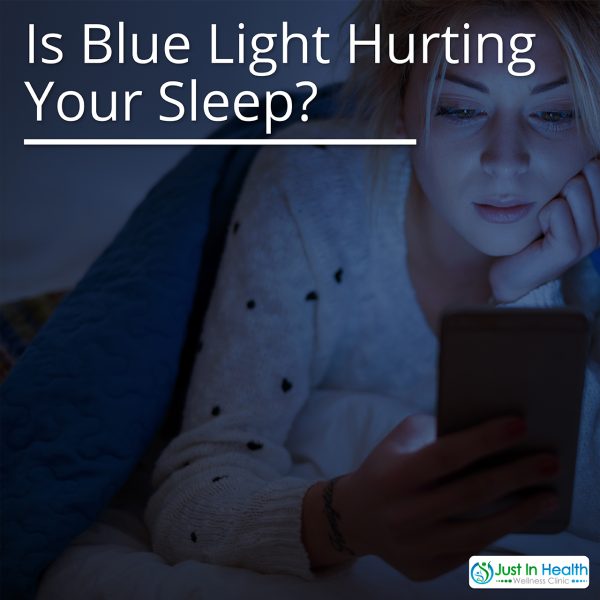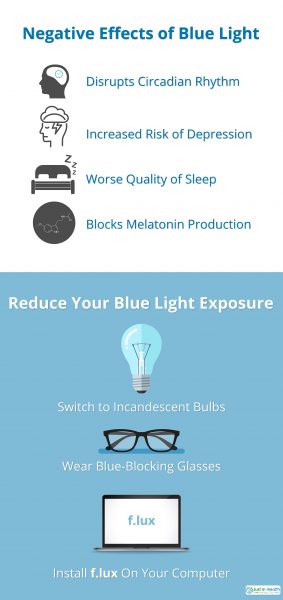

By Dr. Justin Marchegiani
Light-emitting diodes (LEDs) and fluorescent bulbs are the most commonly used sources of illumination. These bulbs are regarded as brighter and more energy-efficient than other bulbs. LED bulbs are not only the common lighting in homes, offices, and stores—they’re also used in electronic displays, like your smartphone’s screen. While LEDs and fluorescent bulbs are a convenient choice, they aren’t a healthy one. Let’s dive into the reasons you might want to steer clear of these types of bulbs, and what you can use instead.
All sources of artificial light, including LED and fluorescent bulbs, can break off regular sleep patterns. The biological system of our body functions in pulses that are laid down by the light received. This is known as your ‘circadian rhythm’ which manages and controls the timing of various biological functions. Your circadian rhythm sets the stage for everything from hormone secretion and brain activity to your sleep-wake cycle.
Up until modern times, our bodies were exposed to sunlight during the day, and moonlight at night. When our ancestors saw sunlight and then when it started to get dark, their brains knew how to appropriately respond. Upon seeing sunlight, their brains mapped out their sleep-wake cycle, and produced the proper hormones based on the time of day.
Evolution doesn’t move as fast as technology, and our brains are still wired to react to light in the same ways as our ancestors’. This makes the artificially-lit world we live in is very confusing to our biology! We sit under artificial lights all day and into the night. Our bodies do the best they can, but we aren’t receiving the right input. Artificial light baffles our body’s natural rhythm— and is especially damaging at night.
The intensely bright blue light emitted from LED and fluorescent bulbs trick your body into thinking it's daytime. When you're exposed to blue lights including the light emitted from your phone, computer, or TV screen), your body stays in “wake” mode. You don’t produce sleep hormones, or any of the other biological steps to prepare for sleep.
LED and fluorescent bulbs create a two-fold problem: they generate artificial light, and they produce blue light. Blue light wavelengths created by electronic devices and light bulbs increase alertness and blocks melatonin production. Studies have also revealed that blue wavelengths inhibit delta brainwaves, which encourage sleep, and enhance alpha wavelengths that generate attentiveness.
Having trouble sleeping? Click here to ask a functional medicine doctor how to optimize your sleep!

Chronic fatigue, sleep deprivation, obesity, and other hormonal health issues have been linked to blue light exposure after sundown. These are growing epidemics in developed countries, and the increasing omnipresence of blue light gadgets is only making things worse.
There are however steps you can take to mitigate the negative effects of blue light. Firstly, reduce your exposure to blue light by swapping out LED and fluorescent bulbs for incandescent bulbs. Incandescent bulbs contain much less of the blue spectrum. Alternatively, candles are a great option for night time lighting. Other than the moon and the stars, the only light our ancestors would have seen at night was fire. Candles are a biologically-friendly source of evening lighting.
It’s recommended to stop using electronic devices at least one hour prior to going to bed. Let’s be real: most of us are going to be using our phones, checking work emails, or watching TV after sundown. If you’re going to use electronic devices after sundown, there are ways to do so wisely.
The iPhone has a feature called Night Shift, which you can set to turn on at night. A program called f.lux for your laptop and desktop computers is a must. Lastly, it would be wise to invest in a pair of blue-blocking glasses. These glasses have an orange tint to the lenses. In generally, the yellower the lenses, the less blue light they block. The redder the lenses, the more blue light they block. Try wearing blue blocking glasses at least 2 hours before you go to bed—the results are pretty incredible!
In the hunt for more energy-efficient products, LEDs have taken over the illumination industry. These sleep-damaging lights are virtually everywhere, and it is up to us to take steps to mitigate their damaging effects. Be conscious of the light you use, and the light you’re exposed to after hours. Invest in a pair of blue-light blocking glasses, download free light-filtering apps, and start sleeping better tonight!
Click here to work with a functional medicine doctor to start sleeping better tonight!
References: